The Gift of South Dakota
Subscriptions to South Dakota Magazine make great gifts!
Subscribe today — 1 year (6 issues) is just $29!
To Pick a Pasque
Apr 16, 2015
If you follow South Dakota Magazine on social media, you may have noticed recent Facebook, Twitter and Instagram posts with a photo of a potted pasque and a request for tips on transplanting this temperamental state flower. When I first saw the photo, I gasped. The state flower? A pasque flower? Photographed in a pot instead of its natural prairie habitat? Wasn’t that illegal?
Many years ago while studying South Dakota history in elementary school, I vaguely remember our teacher warning us that it was against the law to disturb the state flower. Growing up, my gardening mother had a pasque in one flowerbed, but it was a given that we didn’t talk about it. It was one of those dark family secrets, and now this magazine, a representative of all things South Dakota, was flaunting its lawlessness.
I inventoried my finances in preparation for bail money for the staff, did a Google search and consulted a few authorities about this alleged offense. This is when I learned that while nobody was quite sure, it is the general consensus that if a pasque is growing on private land, the land owner (or anyone with the land owner’s permission) may attempt to transplant the flower. If the state flower is found on public (city, state or federal) land, it is illegal to harvest. However, as of this writing and without an exact state statute to reference, nobody really wants to go on the record as to the absolute legality of disturbing this state symbol.
I do love the delicate beauty of the pale pasque flower, one of the first blooms of spring. I understand the allure of possessing its elegant purple natural artistry. However, the taproot of this plant isn’t easily transplanted. It resists being disturbed from pastures and prairies.
I think we may be better off gardening with another early spring plant: chives. I am always excited to see chives as the first sprouts of life in my herb garden. My mounds of delicate green, grassy herbs were easily transplanted from a friend and provide a mild flavor, color and texture to many dishes from my kitchen.
Instead of the short-lived state flower in my garden, I will grow chives all season. Whisking them into fluffy Heavenly Scrambled Eggs creates a delicious breakfast, brunch, lunch or dinner. The delightfully decadent pockets of melted cream cheese may seem so good that they should be illegal, but I know I won’t need bail money for this harvest.
Heavenly Scrambled Eggs
2 eggs
1-2 tablespoons heavy cream (whole milk or half & half will work, but I prefer cream)
kosher salt
fresh ground black pepper
1 tablespoon butter (optional...I DON'T use it with a non-stick pan)
1-2 ounces of cream cheese, cut into 1cm cubes
freshly snipped chives
In a small mixing bowl, combine eggs and cream with a fork or whisk.
In a non-stick skillet, melt the butter over medium-low heat until it bubbles OR just heat the non-stick skillet to medium-low without the butter.
You NEED the pan to be hot before you add the eggs.
Add a little salt to the egg mixture, then pour into pan, stirring slowly with a heat resistant rubber spatula.
As soon as curds begin to form, add the cream cheese cubes and sprinkle in the chives.
Increase heat to high and instead of stirring, use the spatula to fold the eggs over themselves.
As soon as the cream cheese begins to melt (it won't all melt...there will be pockets of tangy, creamy goodness) and the eggs aren't liquidy, remove from the heat and serve. I recommend that you heed Alton Brown's warning: "If they look done in the pan, they'll be over-done on the plate."
Season with fresh black pepper and garnish with additional fresh chives, if desired. Serves 1 ... or 2, if you are better than me at sharing.
Fran Hill has been blogging about food at On My Plate since October of 2006. She, her husband and their two dogs ranch near Colome.


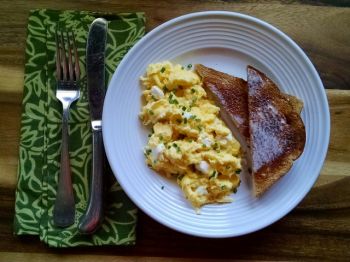

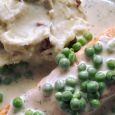
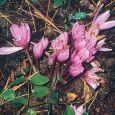
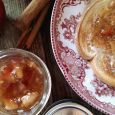
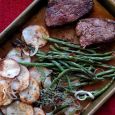
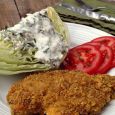


Comments
(And thanks for looking out for us!)